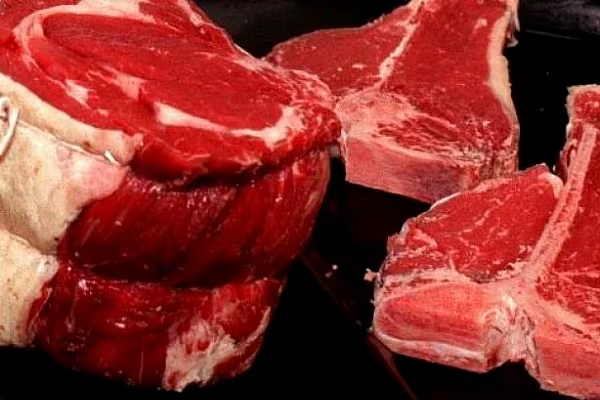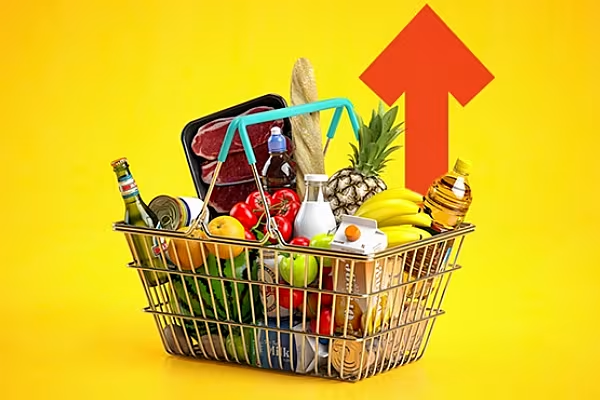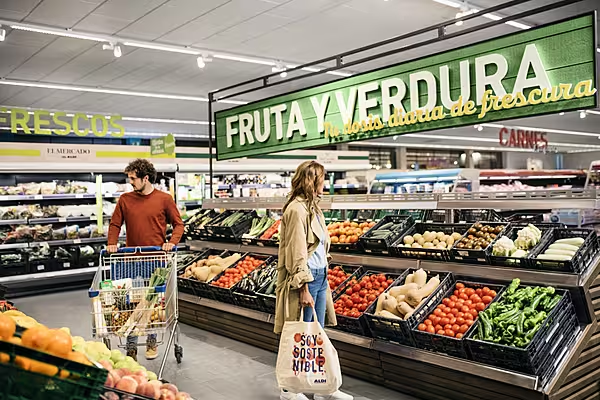Cattle in the U.S. are now the fattest they’ve ever been, signaling an end to the seven-year run of record beef prices just as losses begin to mount for American feedlot owners.
Tom Fanning, who manages a feedlot herd of 30,000 in Buffalo, Oklahoma, says he loses $100 to $300 on each animal he sells to slaughtering plants, even though they are bigger and produce more meat than ever. It's worse for other producers. On average, industry losses began in December and ballooned to $420 a head this month, the Livestock Marketing Information Center estimates.
Cattle futures have plunged 22 per cent from an all-time high a year ago as the U.S. herd began a long-awaited expansion and consumers switched to cheaper chicken and pork. That’s squeezed feedlot owners who buy year-old steers and raise them on a diet of mostly corn for more than four months. To ease the pain, operators like Fanning are taking advantage of ample, low-cost grain supplies by holding cattle for almost a month longer than normal, which means the animals get bigger and generate more revenue.
“It still makes economic sense to put on as many pounds as efficiently as you can” to minimise losses, said Fanning, 50, who has been managing Buffalo Feeders LLC for 15 years. His cattle spend about 150 days eating grain before they are sold, about 25 days more than two years ago, adding about four pounds of weight gain per day, he said.
Rising Supply
On average last month, the animals weighed 1,390 pounds (630 kgs) when sold to beef processors, an all-time high, U.S. Department of Agriculture data show. The 2.6 per cent increase over a year earlier was the biggest annual gain in more than a decade. In Iowa, the largest corn-growing state, some cattle have topped 2,000 pounds and are being held 30 to 60 days days longer than normal, said Ed Greiman, who runs a 2,000-head feedlot in Garner, Iowa.
Heavier cattle are helping to boost domestic beef supplies, which had tumbled and sent retail prices soaring. On Nov. 10, the USDA forecast fourth-quarter production will rise 1.8 per cent from a year earlier and that output in 2016 will increase 4.8 per cent to 24.85 billion pounds, the first gain in six years.
The U.S. cattle herd had shrunk to the smallest since 1952 after a 2012 drought parched pastures and sent corn futures surging to a record. Spurred by the jump in beef, ranchers are showing signs of rebuilding their inventory. The herd on July 1 was 98.4 million head, up 2 per cent from a year earlier and the first increase for that time of year since 2006, the USDA reported on July 25. As of Nov. 1, feedlots held more animals for that time of year since 2012 and were growing at the fastest rate in four years, government data show.
Cheaper Beef
Prospects for more supply are reducing costs for consumers. Wholesale-beef prices have dropped 23 per cent from a record in May and on Monday closed at $2.0279 a pound, a 22-month low, USDA data show. Retail ground-beef has dropped for four straight months, the longest slide in five years, to $4.083 a pound, compared with an all-time high of $4.238 in February, according to the Bureau of Labour Statistics.
Tyson Foods Inc., the largest U.S. meat processor, said Nov. 23 that a plunge in cattle prices eroded earnings by $70 million in the fiscal fourth quarter ended Oct. 3.
“After several years of significant beef inflation, we look forward to expecting easing of prices in 2016,” Scott M. Colosi, the president and chief financial officer for steakhouse restaurant chain Texas Roadhouse Inc., said during a conference call Nov. 2.
More Demand
Cattle futures for February delivery rose 0.5 per cent to close at $1.3385 a pound on the Chicago Mercantile Exchange.
Cheaper beef may boost demand, limiting the decline in prices. The USDA is forecasting domestic consumption will rise to 55.3 pounds per person next year, up from 54.4 pounds in 2015, and that exports will rebound in 2016.
Prices may not drop all that much until warmer weather leads to more outdoor grilling starting around April, partly because retailers are slow to pass along savings to their customers, said Altin Kalo, analyst at Steiner Consulting Group in Manchester, New Hampshire.
Prolonged losses also may discourage feedlots from purchasing year-old cattle, which would eventually reduce their herds and limit supplies for processing plants.
Goldman Sachs Group Inc., in a Nov. 18 report, forecasts cattle futures in Chicago have “further downside risk” from weaker domestic demand and slowing U.S. exports because of the strong dollar. Prices will average $1.30 a pound in three months and $1.20 a pound in six months, the bank said. The contract for February delivery closed Wednesday at $1.332.
“Eventually, consumers are going to benefit," said David Kruse, president of CommStock Investments Inc. in Milwaukee, Wisconsin.
News by Bloomberg, edited by ESM. To subscribe to ESM: The European Supermarket Magazine, click here.














